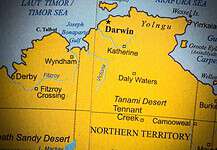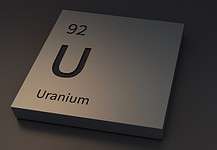AT the centre of the Salzkammergut, Austria’s salt mining district, sits one of the country’s oldest mining towns.
Despite its diminutive size, Hallstatt is home to the oldest salt mines in the world, which have gifted the beautiful lakeside town long-term prosperity and a widespread cultural influence since medieval times.
The first Hallstatt town deed was recorded in 1305 AD; while ‘hall’ is the Celtic word for salt, it is generally believed that the name of the town was derived from the West German ‘hal’ (salt) and Old High German ‘stat’ (settlement).
However, evidence of salt mining at the site of Hallstatt and surrounding areas dates back to the latter stages of the Stone Age. In 2001, scientists used radio carbon dating on an antler pick – a tool found in Neolithic communities in northwest Europe – and determinedit was about 7000 years old. The pick, which was a common Stone Age mining tool, has provided the earliest evidence of settlement at Hallstatt. Historians believe that at the time, salt was hewn out in the shape of hearts – now known as Hallstatt hearts – and carried in animal skin backpacks down the Dachstein Mountains.
Recent research has revealed that organised salt production may have occurred in the region as early as the Middle Bronze Age (about 2000 BC), when natural brine was deposited in large man-made basins before being evaporated in ceramic vessels. Underground mining began at the end of the Late Bronze Age, with workers implementing arudimentary shaft technique. Production appears to have halted for a short time, probably due to political upheaval, before resuming in about 800 BC using a system of basic drift mining with horizontal galleries.
Due to the preserving qualities of salt, the Hallstatt mines have yielded a large number of archaeological treasures.
In 1846, a prehistoric graveyard was discovered, home to more than 1300 graves containing an assortment of artefacts including jewellery, weapons, bronze and ceramic vessels, and iron tools: indicating that the Hallstatt natives were trading from the Baltic to the Mediterranean regions and using salt for payment.
Salt works manager at the time, Johann Georg Ramsauer, recognised the importance of the discovery and had his assistant sketch each gravesite, including skeletons and artefacts as they were uncovered.
The discovery of the prehistoric cemetery was extremely significant and resulted in Hallstatt becoming the type-site for the first phase of early Iron Age culture in Europe. What came to be known as the Hallstatt Age dates from 800 BC to 400 BC, and marks the early movement of Celtic tribes to the area from the east. The graves included local and imported products plus luxury items: evidence of a stratified and highly-organised culture that traded extensively in Central Europe, the Baltic and the Adriatic regions.
Wet salt mining, whereby salt was released from the mountain with fresh water and dissolved in artificial pits before being piped down the mountain for processing, was introduced in the 12th century.
Salt production required large quantities of timber for shoring up the mines and as fuel for the evaporation process, and this was sourced from the vast upland forests. Salt mining licences were commonly leased to independent burghers (citizens of the town, usually members of the wealthy middle class), but these licenses were systematically eliminated and by 1524, mining and forestry systems came under
direct management of the Crown. This reorganisation of the industry resulted in a number of impressive engineering innovations, such as the wooden brine pipeline.
In 1595 the pipeline, made from more than 13,000 hollowed out trees, was extended 40km to the market town of Ebensee where salt was collected for final processing. It is considered the oldest industrial pipeline in the world.
There was a boom in salt production at the beginning of the 1900s to finance Austria’s war against France, but the return to peace saw a rapid slump in demand. Technical advancements such as the introduction of electric power and the construction of a rail link that facilitated coal imports from 1887 streamlined the production process. Despite the salt processing works finally closing in 1965, salt production remained as high as ever, with brine piped down the valley to a modern treatment plant at Ebensee.
Today, about 60 men are employed in an efficient mining operation that has become highly computerised andmechanised. The historic salt mines, 300m up the mountain, are partially open to tourists; with a population of about 900, Hallstatt manages to attract more than 80,000 visitors a year.
Due to the profound association between intensive and extensive human activity, and the largely untamed natural landscape, the Salzkammergut region was honoured with a place on the UNESCO World Heritage List in 1997.
The cultural landscape of the region boasts a continuing evolution spanning 2500 years, with its history linked to the economics of salt mining and production from the very beginning.
In June 2012, it was reported that Chinese mining company China Minmetals Corporation had built a full-scale replica of the entire town in the Huizhou Guangdong province. This version of the lakeside European town includes an exact replica of the church clock tower, European-style wooden houses and other properties to be sold to investors. Despite the initial mixed response, Hallstatt mayor Alexander Scheutz flew to China with an Austrian delegation to mark the official opening of the Chinese village and signed documents promising future cultural ties.
Advertisement











































